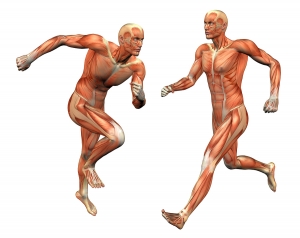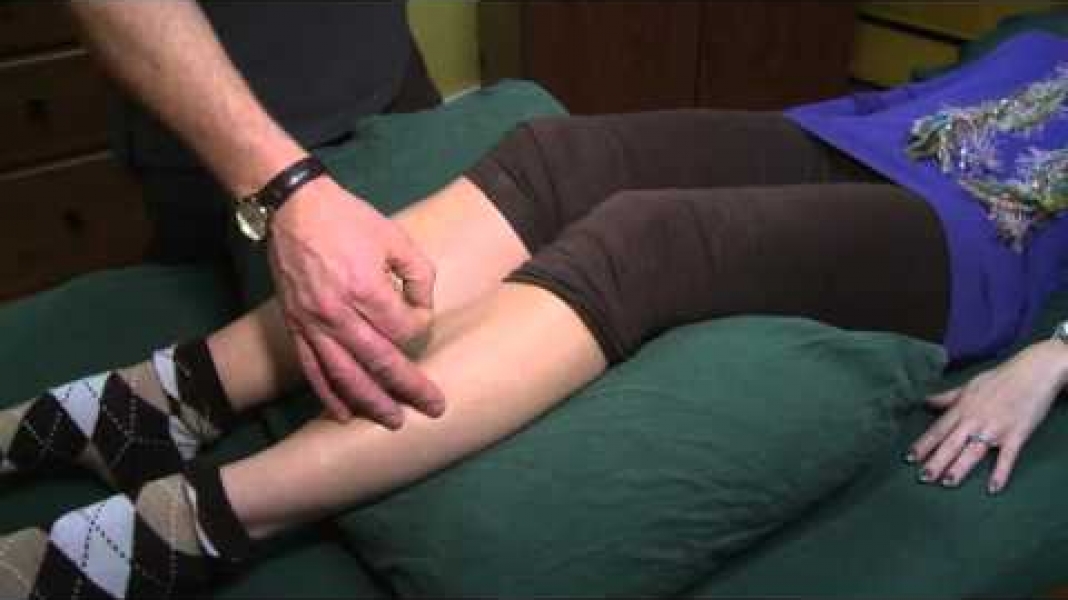
The recent discovery and greater understanding of the micro-structure and possible functions of the interstitium has been getting a lot of medical media buzz recently. It has even been called a “new” organ, the largest one in the body, representing the connective tissue such as the fascia around and between muscles, and indeed, everywhere else. For me, this represents a very practical missing link in my education which is now the focus of my training in this clinic.

Danielle Schmieman, BSc Kinesiology
After 4 years in a Bachelor of Science in Kinesiology, a university degree that focuses largely on the extensive human anatomy and physiology, I cannot recall a time that the concept of fascia was ever mentioned – not once! Through multiple courses on structure and function, the focus was always on muscles – muscle structure, muscle function, muscle action. Then after 3 weeks of working in a manual therapy setting at The Acupuncture Turning Point, there has been a lot of talk and discussion and practical focus in the “fascia”. I knew the definition of the word but had never really thought about it as an academic or as an athlete. How could it be that after all that schooling about the human body, a system that seems to be integrated throughout the body was never a topic of discussion at a university program focusing on human movement?
It is the perfect example of how even the highest institutions of learning can be both years behind in teaching what is actually happening but also at the leading edge of discovery in research. Something like research of the connective tissue is certainly not new, but discoveries from different institutions or scientists in this area are difficult to understand as a whole, and as such, are rediscovered many times as something new before the significance can be realized. And even then, it takes new generations and new research programs to update the textbooks and the curriculum! Either way, each additional day that I spend here the topic seems to come up more and more and really makes sense both therapeutically for injury recovery, but also from an athletic performance and training point of view.
So, what is fascia? In simple terms, it is a type of continuous connective tissue found throughout the entire body – not just as a separate entity but a tissue that is integrated everywhere. Fascia critically provides a dynamic structural matrix, that supports and protects, nourishes and provides constant healing and repair to muscles, nerves and vessels, organs and the tissues of the body. Because of this, it plays a significant role in the balance of health and disease, and being the foundation of maintaining posture, controlling body position and producing smooth, coordinated movement; it can even be seen as a continuous communication system, in and of itself.
Fascia and muscles provide structure in the body by creating a continuous tension throughout – called tensegrity (tension + integrity). These structures have the ability to move and adapt to this constantly changing tension without our structure or posture being compromised. This is because fascia is adaptable but also resilient to deformation – it likes to move, but will also return to its original position.
We often take our upright posture and the ability to move freely for granted, because we often don’t think about how we sit, stand or move throughout the day – that is until we experience restricted movement or pain. Then we begin to wonder how this happened and how we can make the pain go away. Throughout my schooling we always talked about muscle strains, pulled muscles, overused muscles, weakened muscles, how to strengthen muscles, the list goes on. However now we know that it’s not just about the muscles, it’s about the fascia too. Fascia is closely linked to muscles because of how it not only surrounds it, but intertwines with it, and connects to it at the cellular and even subcellular level. That means that when muscles move, the fascia moves with it and when muscles become stagnant, the fascia becomes stagnant as well. Fascia “remembers” or “learns” the positions and postures that you live with mostly. If you sit all the time, it adapts to that (along with muscles and tendons and ligaments and cartilages and bones). Understanding fascia lets us better understand why sitting so much is such a problem in modern society, but also it gives us insight into solutions.
Studies have shown that sitting and working at a desk all day leads to bound fascia (Beach, 2010). It makes sense because if your muscles aren’t being worked throughout the day, neither is your fascia. Ideally fascia glides and slides as we move, but when it becomes tight the ability to move freely and pain-free is reduced – and this is when injuries or pain start to arise. One reason this causes pain is because fascia responds to force with force. If you haven’t moved all day and all of sudden you go home and shovel the driveway, work in the garden, or even lift some heavy boxes, your fascia and your body are not going to be properly prepared to respond like you may be used to. Fascia will likely be stiff and resist the force instead of being flexible and giving.
If you experience an injury or pain somewhere, the body will start to adapt and compensate in order to keep you upright and try to minimize the pain. This compensation can cause the fascia to shorten or tighten up in certain areas because the muscles cannot do all the work on their own. It may also represent adhesions of fascia between muscle/tendon layers that are now sticky that used to glide freely. This brings up another interesting part about fascia – since it is one continuous system, an injury to say your foot may produce pain and tightness in your foot but also produce pain in your knee or hip, even though that’s not the structure you directly injured! This may be because fascia acts to absorb force and disperse it to minimize the direct influence of an injury. Injured fascia in your foot could result in it being more stretched up by the knee, therefore resulting in pain away from the sight of injury.
This is where part of the idea of movement comes in. As mentioned previously it is just as important to get the muscles moving so that the fascia can move as well. The only way to keep the fascia sliding and gliding freely with muscles is to move and properly activate those muscles. Even if it’s as simple as walking a couple laps around the office, doing some shoulder rolls at your desk, or actively engaging your core when sitting or standing, any kind of movement throughout the day is better than constantly sitting at your desk – or sitting anywhere for that matter.




